Today we travel to a future where forensic science gets so sensitive, just touching something could mean becoming suspect number one.
Guests:
- Raychelle Burks — professor of chemistry at St. Edward’s University
- Kelley Kulick — deputy public defender at the Santa Clara Public Defender’s Office
- Mitra Sharafi — professor of law at University of Wisconsin Law School
- Mary Graw Leary — professor of law at The Catholic University of America Columbus School of Law
Further Reading:
- Raychelle Burks on Poisons, Medicine, and Communicating Science
- Forensic Nightmare: The Perils of Touch DNA
- Could Secondary DNA Transfer Falsely Place Someone at the Scene of a Crime?
- Framed for Murder By His Own DNA
- Forensics gone wrong: When DNA snares the innocent
- Touch DNA and Chemical Analysis of Skin Trace Evidence: Protecting Privacy While Advancing Investigations
- The origin of unknown source DNA from touched objects
- DNA fingerprints from fingerprints
- Cocaine Contaminates Majority of U.S. Currency
- The ‘CSI Effect’: Does It Really Exist?
- The CSI effect on cold case investigations
- Imprint of the Raj by Chandak Sengoopta
- The Hounds of Empire: Forensic Dog Tracking in Britain and its Colonies, 1888-1953
- Global Forensic Cultures: Making Fact and Justice in the Modern Era
- The Imperial Serologist and Punitive Self-Harm: Bloodstains and Legal Pluralism in British India
- The Supreme Digital Divide
Actors:
- Evan Johnson as Mr. Morton
- Brent Rose as Dr. Karpou
- Helen Rosner as Dr. Duncan Dougal
- Tamara Krinsky as Dr. Susan Simmons
Flash Forward is produced by me, Rose Eveleth. The intro music is by Asura and the outtro music is by Hussalonia. The episode art is by Matt Lubchansky. Special thanks this episode to Evan Johnson who coordinated all the teens you’re going to hear in this season, and who plays our intrepid debate club teacher this season. Here’s a fun fact about the intros this season, the actors, the teens, actually wrote their own scripts. I assigned them sides, and they had to come up with their arguments. So I actually did not know what they were going to say until we got into the studio. Special thanks also to Veronica Simonetti and Erin Laetz at the Women’s Audio Mission, where all the intro scenes were recorded this season. Check out their work and mission at womensaudiomission.org.
If you want to suggest a future we should take on, send us a note on Twitter, Facebook or by email at info@flashforwardpod.com. We love hearing your ideas! And if you think you’ve spotted one of the little references I’ve hidden in the episode, email us there too. If you’re right, I’ll send you something cool.
And if you want to support the show, there are a few ways you can do that too! Head to www.flashforwardpod.com/support for more about how to give. But if that’s not in the cards for you, you can head to iTunes and leave us a nice review or just tell your friends about us. Those things really do help.
That’s all for this future, come back next time and we’ll travel to a new one.
FULL TRANSCRIPT BELOW
▹▹ ▹▹ ▹▹ ▹▹ ▹▹ ▹▹ ▹▹ ▹▹ ▹▹ ▹▹ ▹▹ ▹▹ ▹▹ ▹▹ ▹▹ ▹▹ ▹▹ ▹▹ ▹▹ ▹▹ ▹▹ ▹▹ ▹▹
Rose: Hello and welcome to Flash Forward! I’m Rose and I’m your host. Flash Forward is a show about the future. Every episode we take on a specific possible… or not so possible future scenario. We always start with a little field trip to the future, to check out what’s going on, and then we teleport back to today to talk to experts about how that world we just heard might really go down. Got it? Great! A quick note: this is the one episode of the CRIME season where we are going to talk about some violent cases. That includes murder and sexual assault. So if that’s not something you want to hear about, skip this episode.
Okay, today we’re starting in the year 2060.
[kids chatting]
Mr. Morton: Okay everybody!! We have arrived! Now, before we got off the bus, a few ground rules. Everybody listen up!
Stick with the group, no wandering off.
Stick with your buddy, everybody has their buddy right?
Remember, you are here as a representative of Roke Island Academy so please, be on your best behavior.
This is a REAL public debate, so pay close attention. Those of you who haven’t debated yet especially, see what you can learn.
I have our tickets here, get one from me as you get off the bus. We’ll have lunch afterwards and then get back on and head back. Ready? Alright let’s go! Woooo debate club!!
[sound of students milling about]
[mic tap]
Dr. Karpou: Hello, if you could all take your seats, we’re about ready to begin. I want to thank you all for coming to today’s debate, hosted by the University of Broxholm’s Department of Ethics, Biotechnology, Law and the Future. Today we have the pleasure of hearing arguments from Dr. Susan Simmons, an ethicist and lawyer here at Broxholm, as well as arguments from Dr. Duncan Dougal, a world renowned scholar of biotechnology and forensic science who made the trip all the way from Kennituck Falls to join us. I’m so pleased to have these two esteemed thinkers on stage today, so I won’t wax on too long here. Please give our guests a warm welcome.
[clapping]
Today, Dr. Simmons and Dr. Dougal are going to take on an issue that’s at the forefront of forensic science and law — how to regulate hyper-sensitive equipment and the evidence gathered by such instruments. In a world where we can pick up the tiniest amount of DNA, drug residue, and other organic materials, how do we balance privacy, justice and ethics? Does more data mean better criminal justice decisions? Or are we about to be mired in a pile of useless, privacy eroding leads?
So, without further ado, let’s begin. Dr. Dougal, as our esteemed guest, let’s begin with you.
Dr. Duncan Dougal: Thank you so much Dr. Karpou, and thank you all for coming. I’m very much looking forward to discussing this issue with Dr. Simmons.
Let me begin with a few statistics, if I may. Last year, forty percent of murder cases in the United States went unsolved. And that’s the best record we have, it turns out. Other kinds of crimes have even lower rates of justice: seventy percent of rape cases go unsolved. Same for robbery. For property crimes, you’ve got a less than twenty percent chance that anybody will be caught. These numbers are an embarrassment. In a nation that prides itself on law and order, on justice, on protecting its people, we are doing a miserable job of actually following through.
This is, quite frankly, a crisis. But we can fix it. Forensic science has offered myriad tools to improve the quantity and quality of leads derived from crime scene evidence. We can now detect DNA on something a person simply touches. We can pick up traces of chemicals no matter how meticulous the perpetrator was with their cleanup. We can follow a molecule of cocaine on a single bill for weeks, even months. And to not do so, to not use the tools at our fingertips, is to deny justice to millions of victims and their families.
We cannot turn back the hands of science, or put the genie back into the bottle. These devices exist, and to keep them on the shelves is foolish at best, and negligent at worst. The science will continue to evolve, and resisting it is tantamount to resisting justice.
Dr. Karpou: Okay, wow, thank you so much Dr. Dougal. Now we’ll hear from Dr. Simmons, please, take it away.
Dr. Susan Simmons: My pleasure Dr. Karpou. Dr. Dougal, it’s always a pleasure to discuss these issues with you, even if perhaps we don’t see eye to eye.
I too would like to begin with some statistics, if I may. Ninety percent, that’s the number of cases in which errors were found by the FBI when they used a microscopic-hair-comparison analysis. And this is just the tip of the iceberg when it comes to forensic mistakes. Thirty-six percent of the wrongful convictions documented over the last ten years involved faulty forensic evidence. And these cases lay an inconvenient truth bare: More science does not inherently lead to better crime solving.
Let me just poll the audience for a moment. How many of you do cocaine? [chuckle] Right, I suspected not many, and of course the chances of you admitting it are low aren’t they? But I feel safe in assuming that the vast majority of you here do not do cocaine. I also feel confident in saying that if I pulled the money out of your wallets, and tested it with one of these state of the art sensors, I would find traces of cocaine on that money. Now, imagine you’ve been pulled over by an overzealous police officer, he swabs your money, and drags you in on drug charges.
That is not a hypothetical scenario. It happened recently, in Detroit, to a man named Jeremy Thatcher. And it will only happen more as we put this technology in the hands of an already biased police force. We have to think carefully about this technology, what it can actually tell us, and how it might be weaponized against certain communities, before rushing ahead. I’m not asking for a ban, I’m simply asking for caution.
Dr. Karpou: Wow, incredible, thank you Dr. Simmons. Alright, now we’ll have each of you ask a question. Dr. Simmons, why don’t we begin with you.
Dr. Simmons: Sure. Duncan, if I may, how do you see these tools plugging into already over-extended police departments? When they suddenly have ten more leads for each case, how will they manage that given that most precincts don’t chase the one or two leads they have now?
Dr. Dougal: It’s a great question Susan. Obviously I’d love to see law enforcement better funded and equipped, so they could chase all these leads. But the key thing to note here is that more leads cannot, in my view, be bad. The detectives may not be able to investigate them all, but I trust that their expertise will lead them to investigate the right ones. So even if they are still only investigating two or three, they’re now investigating two or three out of ten possible options, rather than going for their only choices. In addition, these investigators will be able to present to a jury all the options, all the leads they had and discarded, to show that their work was thorough and that they left no stone unturned.
The crucial piece here, that we must not lose sight of, is that this is about offering MORE choices to law enforcement, more insight, and if that more insight catches even just one more murderer, I’m hard pressed to see how someone could argue against using it.
Dr. Karpou: Okay, excellent, thank you both. Dr. Dougal, your question for Dr. Simmons?
Dr. Dougal: Yes, of course. Susan, how would you explain to a mother whose daughter was kidnapped, that we shouldn’t use every tool available to us to catch the criminal, and perhaps save her baby?
Dr. Simmons: [laughing gently] Of course, a heartstring hypothetical, your favorite. Let me just add on to this hypothetical then, given that we’re just making things up here. Okay let’s say you and I share carpooling duties, so sometimes I drive your kids and sometimes you drive mine. I pick your kids up some days, you pick my kids up some days. That means that sometimes, you touch my car, the car that my child was stolen from. Now, when crime scene investigators come to gather evidence, they swab down my car, and your DNA from that touch is on the car. My daughter’s DNA is in your car, too. Suddenly you, Duncan, are a suspect. Now, you might say, “well, I have an alibi, it obviously wasn’t me.” But what if you don’t have an airtight alibi, what if nobody can vouch for where you were. What if the police chief has it out for you, for some reason. Suddenly you’re suspect number one.
My point here is that more evidence does not always lead to better case solving. Rather, it empowers investigators who have already made up their minds to push a theory on scant evidence.
Dr. Karpou: Well, this has been quite lively. Thank you both so much for your insights here. I do want to make sure we have time for audience questions though. So if you have a question, please push the little button on the seatback in front of you, and someone will come by to give you a microphone. Please remember, questions only, there must be a question mark at the end, and you have no more than two sentences to ask the question, I WILL cut you off…
[Students getting back on the bus]
Mr. Morton: Okay is everybody here? Is anybody missing their buddy? Let me do a quick count — 2, 4, 6, 8, 10, 12, 14… Charlie are you back there, yes, okay, 16. Great! Did everybody use the bathroom before we go, if you needed it? Remember it’s a two hour drive back…. Alright? We’re set? Okay great! Let’s hit the road!
[fade out]
Rose: Alright, so, this is the CRIME season and today’s episode is about what you probably think of, when you think about true crime. Detectives, murder cases, forensics, catching serial killers, all the things you see on crime shows like CSI or NCIS or, my personal favorite, Bones. Now, if you’ve ever watched any of those shows you’re probably aware that a lot of the forensic stuff they do is not super realistic.
Supercut: Can you enhance the image from here? Can you enhance it right here? Can you enhance it? Can you enhance it? Can you enhance it? Can we enhance this? Can you enhance it? Hold on a second, I’ll enhance it.
Raychelle Burks: It makes it seem as if no one does paperwork. And I agree. Paperwork is not exciting as running around you know whatever.
Rose: This is Raychelle Burks, a professor of chemistry at St. Edward’s University. And before becoming a professor of chemistry, Ray worked in a crime lab.
Ray: There’s a tremendous amount of documentation that you have to do which makes sense. Right. You have to: What did I do when did I do it all that kind of analysis. You never saw any of these you know sparkly people read it around at their desk reading reports reviewing colleagues were writing their own reports. And I would say that was a good fifty percent of my time.
Rose: On fictional TV crime shows, there are always fingerprints or DNA to collect, always some fancy forensic analysis to do. In the real world, things are way less sensitive and take a lot longer. For example, on TV, you can get a DNA sample off of a doorknob, and get an analysis of that DNA back in a matter of hours. In reality DNA analysis can take four to six weeks, even longer, depending on how back logged the lab is. And the chances of finding DNA at all, are often pretty slim.
In fact, these shows have given rise to an idea called the CSI effect — this theory that jurors who watch these shows start to expect far more forensic science in cases, and might acquit someone wrongfully if there isn’t enough science for their liking. One judge, writing about this purported effect, said that he once heard a juror say “they didn’t even dust the lawn for fingerprints,” which… would be impossible, for the record.
Now, whether the CSI effect is REAL is actually a point of debate. There are some studies that suggest that these shows don’t necessarily have an impact on a juror’s decision making. But we do know that as forensic science has gotten more attention in general, both on crime shows and just in the news, it has made jurors more likely to want to see scientific evidence. In one survey, 46 percent of people said they expected to see scientific evidence in EVERY criminal case. 22 percent said they expected to see DNA evidence in every criminal case.
Traditionally, this has been totally unrealistic. But… that is changing. And the thing that used to be laughable on crime shows, the idea that you could pick up just a couple of cells from someone touching a doorknob, for example, and generate a suspect profile from that… that’s becoming a reality. Take the cocaine thing, that our fictional debaters mentioned in the intro. That’s real.
Ray: U.S. currency is just swimming in cocaine. Right. And there’s the difference between which denominations right, higher denominations have more cocaine. But we’re still talking about trace levels we’re not talking about even milligrams of cocaine. You’re talking like nanograms.
Rose: Just because someone’s money has cocaine on it, doesn’t really… mean anything necessarily.
Ray: And that’s where you get into you know it might sound weird to say the narrative of the story but you have to say that that’s the context what does that mean for the context you’re talking about.
Rose: Just because you CAN detect something, doesn’t mean that it’s meaningful. But humans are very good at coming up with meaning even out of very, very tiny signals.
Ray: As we get lower and lower and what we’re capable of like the touch DNA like single so let’s ask ourselves what does it mean though? Especially when some of these papers have come out that make me break out in a cold sweat.
Touch DNA is, basically what it sounds like.
Ray: OK I’m looking at my hand right now and I go to touch my desk like you’re just picking up a pencil or you’re or you’re placing something down or if you’re just a real boisterous speaker like I am and you’re like gosh darn it right you taps the desk. Then that that transfer. Real, you know, what we would say is you’ve literally just touched something or you go to open a door.
Rose: Now, forensic investigators can actually create a profile of you based on the analysis they can do off just a couple of skin cells that you left behind when you touched something. And it’s not just if you touch something. If you touch something, and then someone else touches that thing, they can then transfer your DNA to a crime scene. In one study, and this one really blew my mind honestly… researchers had two people shake hands for two minutes. Which okay that is a very long and awkward handshake, but, whatever. After that handshake, they had those two people handle knives. Then they tested those knives for DNA. And in 85 PERCENT of the cases they picked up not just the DNA of the person who had handled the knife, but ALSO the person who they had shaken hands with earlier.
Ray: Right, tat was a fun one to read. And by fun, I don’t really mean fun. You know and the question was, right, it really caught my attention when the paper came out. Could secondary DNA transfer fastly falsely placed someone at a scene of a crime. Well that’s the nightmare right. That is literally the nightmare.
Rose: And this isn’t a theoretical nightmare. It’s a nightmare that real people have lived. Which brings me to today’s big case. Again, this is a murder case, so if you don’t want to hear about murder time to stop the episode. A lot of the following information comes from a PBS Frontline investigation about the story, published in collaboration with WIRED and The Marshall Project, and I’ll link to that story in the show notes.
On November 29th, 2012, a group of men broke into a mansion in a town called Monte Sereno, California. At the time, it was the home of an investor named Raveesh Kumra, who was in his living room watching CNN at the time. The burglars tied him up, blindfolded him, and taped his mouth shut with duct tape that was printed to look like it had little mustaches on it. The men also found Raveesh’s partner, Harinder Kumra, and they tied her up too. Then they set off to ransack the house for cash and jewelry and whatever else they could find.
When they left, Harinder blindly felt her way to the phone and called 911. But it was too late for Raveesh. The mustache-printed duct tape had suffocated him. A paramedic declared him dead on the scene.
A few weeks later, when the police got the DNA analysis back, the report listed three different people whose genetic material was found at the crime scene: A 22-year-old named DeAngelo Austin, a 21-year-old Javier Garcia, and a 26-year-old named Lukis Anderson.
Kelley Kulick: [So the first thing I do is I meet Lucas and basically introduce myself and start to build a rapport with him. He was very easy to build a rapport with Lucas and I got along very well very quickly which was helpful.
Rose: This is Kelley Kulick, a public defender in Santa Clara county, in California. And she was assigned to Lukis’s case.
Kelley: So Lukis is great. Lukis is African-American. Lukis unfortunately suffers from paranoid schizophrenia. In addition he has an alcohol problem which resulted in an accident, he was hit by a truck about three years before our case and was, suffered traumatic brain injury. So he has memory deficits. He also has some speech deficits and his mental health is not well treated. He lives on the street. He’s homeless.
Rose: And when she met Lukis, neither of them really knew why he was a suspect. Lukis said he didn’t know anything about this murder. And Kelley believed him.
Kelley: I think any good public defender will tell you that you always listen to your clients but you always have to have a grain of salt right. And that’s why we do our own independent factual investigation on top of whatever the client tells us. But if we have a client that says I didn’t do this we have an obligation to investigate every avenue of that type of defense.
Rose: So when she found out that his DNA had been found at the crime scene, and not just at the crime scene, but under the victim’s fingernails… she had to think about her next move carefully.
Kelley: Before we got the DNA here. I told them I said Look you keep telling me you don’t know anything about this case but if your DNA comes back there. I said we’re going to have a different conversation. And sure enough, we get the DNA hit, which generally for us means okay, now how am I going to explain how you were there.
Rose: With the other two suspects, Austin and Garcia their involvement was a little easier to figure out — their cell phones showed that they had been near Monte Sereno, the night of the murder. And Austin’s sister was directly linked to Raveesh.
But for the prosecutors, Lukis’s connection to all of this was kind of a mystery. Detectives couldn’t figure out how he fit into this picture, or how he knew these other two guys. Lukis lived in San Jose, not Oakland, like the other two. But again his DNA was found underneath Raveesh’s fingernails, so he had to have been involved somehow.
Eventually, detectives worked out a theory. Lukis had spent some time in jail at the same time as a friend of DeAngelo Austin. The two could have become connected that way. And Lukis did have an arrest for residential burglary on his record. So maybe, they thought, the other two had brought Anderson in as like basically their home-invasion expert. Everything was coming into place.
Now, this was a felony murder case, which meant that Lukis Anderson could have gotten the death penalty.
Kelley: Because this was a potential capital case we have to also begin what’s called a social history, which means we begin to learn who Lukis is from probably two generations before he is born all the way up through the crime. So we started to amass records and everything that we could to learn about who Lukis was.
Rose: What Kelley was NOT expecting to find, was an airtight alibi.
Kelley: I remember distinctly my investigator called and was like you got to come see this. And I walk over and we must have flipped through it a hundred times. Like there’s no way… like there’s no way.
Rose: Amidst the big stack of medical paperwork, was a record from a trip to the hospital. Lukis had gotten so drunk he collapsed in the aisle of a grocery store, and the clerk working there called the cops. An ambulance had taken him to nearby Valley Medical Center, where they kept him overnight to detox.
And the date on that record? November 29th, 2012. The night Raveesh was murdered, Lukis Anderson had been in a hospital bed so drunk that he nurses were checking in on him every fifteen minutes.
So how did Lukis Anderson’s DNA wind up underneath Raveesh Kumra’s fingernails?
It took a while, to figure this out, but eventually they realized that the the same EMT who had picked up Anderson in the aisle of the grocery store, had also responded to the call to come to Raveesh’s house. In both cases, the EMTs would have used something called a pulse oximeter, which is a little device that measures blood oxygen level. It works kind of like a little clothespin, and you put it on the end of someone’s finger. Officials think that maybe, they had used the same pulse oximeter on Lukis and Raveesh, transferring the DNA that way. And just like that, Lukis Anderson became a suspect in a murder that he didn’t commit. Lukis Anderson’s story might seem like some freak accident, but I think it’s actually a sign of things to come.
Rose: Do you think that if you didn’t have this like, sort of like, freakishly airtight alibi for Lukis. Do you think that he would have been convicted for this murder?
Kelley: Absolutely. I don’t think there’s any question. Once you get the hit you build the case around the head and you’re not looking anymore for other investigative leads. And they built a story of guilt around Lucas about how this crime happened. That was completely made up out of whole cloth. But the problem is is that everybody would have believed that because of the DNA hit, and the DNA causes jurors prosecutors police and even defense attorneys to narrow their vision about what happened to the case.
Ray: That’s the thing that makes me break out in a cold sweat at a lot of other professionals. You know if you go to the Goodwill, right. I’m a big thrift store shopper. You go to the Goodwill. You find that cute new thing. And you go home, right, you wash it you wear it. If you were to swab say again those high traffic areas.
Rose: That’s the collar or under the armpits, places where clothing does a lot of rubbing against your skin.
Ray: There’s every possibility that you could find other profiles that are not your own.
Rose: And if that’s not scary enough for you, let me tell you about a little something called laundry transfer.
Kelley: If you take a semen stain on a piece of cloth and you throw it in the laundry and you wash it with other clothes those sperm will be on the other clothes including children’s clothes including maybe a woman’s underwear, and all of a sudden if you were to microscopically look at it and it’s got sperm on it, boy it changes your view about maybe what would have happened.
Rose: And Lukis’s case isn’t even first time that something like this has happened. In 2008, the German authorities were completely baffled by a serial killer they dubbed the “Phantom of Heilbronn.”
Mitra Sharafi: Where they thought that there was this mastermind female murderer who was able to keep all these different killings all in different ways because they found her DNA and all of these very different crime scenes
Rose: This is Mitra Sharafi, a legal historian at the University of Wisconsin Law School. The German authorities offered huge rewards for this killer, who had left their DNA behind at 40 different crime scenes across Germany, France and Austria.
Mitra: And later they finally realized no DNA of a woman at the factory that produced the cotton swabs.
Rose: It turned out their phantom was an elderly Polish woman who hadn’t murdered anybody.
So what do we do with these super sensitive tests? How do we decide what amount of a chemical is enough to mean something, and what amount isn’t?
Ray: What the what the numbers mean, and what they mean in a practical context of what we’re going to do about them. That’s always been the tricky part, I think than the ability to get the data. And so that’s always going to I think going to be the case. But as we get dropped the floor as I call it then we’re really going to have to worry about that.
Rose: But before we can really talk about the future of forensics, we have to talk about the past. I haven’t said that in a while have I? We’re gonna do some history on this episode! I’m so excited, I love when we get to do weird history stuff. When we come back, we’ll talk about why a British scientist gathered up blood from 586 different animal species, and what an “imperial serologist” did.
Mitra: I think it is the greatest job title ever possibly.
But first a quick break.
[[BREAK]]
Rose: Okay, so forensic science has a looooong history and I’m not going to cover the whole thing from top to bottom. The reason I want to talk about history here, is because I want to highlight the ways that, like all kinds of science, forensic science is inherently connected to politics and culture. It always has been. It always will be. So take fingerprinting, for example.
Mitra Sharafi: Fingerprinting in fact originates in Asia and comes to the Western world.
Rose: That’s Mitra Sharafi again. And in the early 1900’s, colonial officers embraced using fingerprints for identification in India in part because of plain, old fashioned racism.
Mitra: There’s a legal historian called Binyamin Blum who has done some work on the British Empire broadly and forensic science and he has in fact found that one reason that British imperial administrators turned to science in a forensic context was that they couldn’t tell colonized people apart simply by looking at them. The idea was that OK so if British people cannot tell different Indians apart Maybe science will be able to help them with that.
Rose: And in fact, like many technologies, fingerprinting was basically tested out, and trialed, on people in India long before the British courts accepted the idea that a fingerprint was reliable enough that it could be used in court to someone to a crime.
Mitra: Colonies are being used as a laboratory for these new technologies and being kind of test it out and lower standards are kind of accepted before they’re acceptable in the imperial Metropole of England.
Rose: We know this is true of other kinds of forensic evidence too. That same legal historian Mitra mentioned earlier, Binyamin Blum, has also looked into the use of forensic dogs in the British colonies around this same time.
Mitra: And he’s found that in in England dog based evidence was not deemed admissible it was not deemed solid enough or acceptable enough. But in places like Colonial South Africa and Palestine which was then under British control dog based evidence was OK.
Rose: And this was also the case for a certain type of bloodstain analysis, carried out by a person with a very cool job title: The Imperial Serologist.
[musical clip]
Mitra: I think it is the greatest job title ever possibly. The imperial urologist was this colonial official stationed in Calcutta. That’s where his lab was. There was only one of him and it was always a him.
Rose: This office of the Imperial Serologist was established during World War One, around 1914, and pretty quickly the lab was inundated with requests.
Mitra: And so there were bloodstains being sent from all across South Asia. Both British India and the princely states, which were outside of British India. There were thousands and thousands of these bloodstains being sent to the imperial serology list every year.
Rose: And most of these requests were for a specific kind of analysis.
Mitra: This particular test called the precipitate test which aimed to identify the species of origin of a blood stain.
Rose: So they would send in stained objects and be like “hey, is this human blood or not?” And the Imperial Serologist would do a test called the precipitin test. And here’s how it worked. You might remember the word precipitate from high school chemistry, right? If you added one thing to another thing, and a precipitate formed, aka a solid, that meant something, it tells you some piece of information. And that’s how this test worked too, the Imperial Serologist had a library of what are called anti-sera made from the blood of all kinds of animals.
Mitra: Then you take your unidentified bloodstain and you mix that with with each of these different anti-sera that we have created. And when we get a precipitate forming then we have a match. So if indeed your mystery stain was human blood then when I mix it with the anti human serum I should get a precipitate forming.
Rose: Now for this to work, you have to have a pretty big set of samples of different types of blood, right? Since you need to compare your sample to humans, and then to whatever else you think it might be, pig, sheep, goat, cow, dog, whatever. And in fact the man who developed this test was a guy named George H. F. Nuttall who spent a good chunk of his life amassing this… giant library of blood. All told, Nutall carried out sixteen thousand experiments on 586 different animal species.
Mitra: A blood zoo.
Rose: A blood zoo! In his book about the test had thanked “seventy gentlemen” who helped him gather samples from around the world.
And like fingerprinting and dogs, the precipitin test really mainly used in India, not in Britain. There are very few documented cases where the precipitin test was used in court back on the cold, rainy Isles. But the Imperial Serologist was incredibly busy, thousands of cases every year! And one of the reasons there were so many requests for this test in India, was that the British were convinced that their Indian subjects could not be trusted.
Mitra: They called it native mendacity or Oriental mendacity. The British have this idea that culturally or racially or perhaps both Europe and British people value truth telling in a way that South Asians did not.
Rose: And when it came to blood, the British pointed to a few cases in which there had been trickery. The most famous case was actually documented in the British Medical journal in 1916, and it involved a feud between two caste communities, the Nadirs and the Naikers. Basically the Naikers wanted to hold a march going past a particular temple, and the Nadirs did not think that was appropriate.
Mitra: There was a colonial magistrate who tried to resolve the dispute but the Nadirs were unsatisfied.
Rose: And so what they did, was, pretty terrible.
Mitra: The Nadirs decide that they are going to frame the Naikers for murder and so the not ours pick the mistress of one of their members.
Rose: This woman is selected because she has no children or relatives.
Mitra: They kill her and then drag her body to the temple leave her dead body at the temple’s entry way and pour sheep’s blood on the ground around it.
Rose: They also somehow managed to get ahold of the clothing of one of the Nadirs, and they poured blood on that, and left it there with the woman’s body.
Mitra: And then they report this to the police and they say one of our members has been murdered by the by the other group by the by this member of the Naiker group.
Rose: Now, Mitra argues that are actually two things going on here, with this murder. The first is obviously trying to frame some body for murder, that’s pretty straightforward. But there’s another piece of this, and it’s a cultural tradition that Mitra calls punitive self harm.
Mitra: And the basic idea is if you wrong me I hurt myself to punish you. OK, so you could think of everything from Gandhian forms of non-violent protest where a person allows themselves to be beaten by police, let’s say when you know demonstrating for Indian independence. You could think of things like going on hunger strike in protest. You could think of things like setting yourself on fire in protest. There are regularly cases of Tibetan monks who do this today in protest against the Chinese occupation of Tibet. Right? You can see those all as kind of part of the same large category of punitive self harm.
Rose: But in some extreme cases, and I want to be super clear, these are rare, but they did happen. What someone would do was, rather than harming themselves, they’d harm someone in their family. Someone they generally deemed expendable.
Mitra: The cases that we know about are often very very gendered. So if I were an adult male in a dispute you have wronged me I might hurt young or very elderly female member of my family as a form of punitive self harm.
Rose: So the idea here is that when the person who wronged you is faced with the results of their harm, in the form of a dead body on their doorstep, they basically become cursed, and are morally responsible for this death. And this kind of thing, again rare, but happened even before the British occupied India. But what happens when a colonial legal structure is superimposed on top of this concept, is that you now have a double incentive for this kind of crime.
Mitra: And so you might be punished not only by all of the social assumptions people will make about you having wronged me when I hurt myself, but also you could be convicted for murder and in the colonial period. That was a capital offense so you’d be executed It’s a twofer you could say, an attempted twofer.
Rose: And this is where the precipitin test comes in. Because in these cases, people would often pour animal blood around the body of the sacrificed family member, to make the crime scene seem all the more gruesome.
Mitra: The precipitin test would show us that oh that blood all around the body of my elderly grandmother, and on your clothing is not actually human blood. If indeed I planted animal blood right. It’s goat’s blood. That’s very strange. Something fishy is going on. Maybe this is one of these fabricated evidence cases.
Rose: And based in part on these, again rare, cases, Britain decided to really double down on forensics in India specifically, because they saw it as a way to get around these supposedly lying natives.
Mitra: State toxicologists, to the imperial serologist to the governor examiners of questioned documents to the chief inspector of explosives and the idea is that science is going to be the answer. Right. If perjury and forgery are the rule rather than the exception in the South Asian courtroom then all of that can be kind of sidestepped or can matter less if you can instead rely on test results and colonial experts.
Rose: And eventually, a lot of these tests and methods, make their way back to Britain, and then to the United States and elsewhere, to inform a whole long legacy of forensic testing. And it’s important to recognize this history, because it helps highlight the fact that, again, just like any other science, forensics is influenced by culture and politics of the world around it.
Mitra: A lot of times the the scientific testing, what comes out of the lab is is portrayed as just very clear very easy very. Something that is kind of immune to politics and social influences and cultural influences and immune to interpretation.
Rose: Just like in Colonial India, the British assumed that the local people were untrustworthy and duplicitous, there are studies that show that in the United States today, there are similar racial biases. Studies have shown, for example, that if you have two men with the same body type, same height, same weight, but one is black, that black man will be perceived as bigger, stronger and more threatening than his identical white counterpart. Other research has shown that police officers are more likely to identify black faces as “criminal” than white faces. And this kind of thinking bleeds over into our forensic tools and how they’re used and who they are used on.
So what does that mean then, for today’s forensic science? How should we think about touch DNA, or super sensitive forensic analysis? What should be allowed, and what shouldn’t be? When we come back, we are get into the legal future of all of this, and whether or not the DNA that falls off your body all the time, without your control, is considered trash.
Man: How old?
Woman: Me?
Man: The specimen.
WomanL I kissed him five minutes ago, a real good one.
Man: I’ll see what I can do
But first, a quick break.
[[BREAK 2]]
Rose: Okay, so, we know that these new forensic techniques open up a whole new world of possibilities. We can detect tiny, TINY amounts of DNA on stuff. We can pick up traces of drugs, both illicit and prescribed. We can use a combination of these techniques to get a picture of someone — whether they smoke cigarettes, or drink coffee, or eat meat.
Mary Graw Leary: What hand lotion they used if they use deodorant and other things.
Rose: This is Mary Graw Leary, a former prosecutor, and a professor of law at the Catholic University of America Columbus School of Law.
Mary: And on the one hand that can be very helpful to law enforcement because it might help them think about the profile of who they’re looking for. Like, well this would suggest that you know this person is on this medication and this person. But on the other side of the coin it’s revealing very personal information that the government now is all of a sudden able to get which they typically could not get otherwise.
Rose: How much should we let the government learn about a suspect, just from the cells they left behind at a crime scene? This question actually isn’t new. When DNA evidence was first entering into the forensic lab, and being used in court cases, there was a big debate about exactly this. By sequencing someone’s DNA, you can find out a whole lot of information about them, their health, their predisposition to disease, all that stuff. And in the early days of DNA evidence, some people argued that that was a line too far, that just being a suspect of a crime did not entitle the government to getting all that information.
And the Supreme Court agreed.
Mary: The early case law of DNA one of the reasons that that became accepted in the courts was because the DNA loci that were used were so-called junk DNA. They didn’t have other information that could tell you anything about the person who left it.
Rose: Now, today we know that this so-called “junk” DNA probably isn’t junk at all, but that’s a whole other episode. The point here is that DNA evidence was okayed by the Supreme Court precisely because this DNA did NOT reveal anything specific about the person who left it behind.
But now, we CAN reveal things about the person who left their DNA behind. We can reveal a LOT of things about that person. And that opens up a huge can of worms here, and almost all of them slither their way back to the Fourth Amendment.
Mary: So the fourth amendment obviously put in its most simple terms protects people’s privacy interest from government search.
Rose: Okay we’re going to get into the Fourth Amendment in a second, but, I thought maybe I would add a fun fact about worms here. So I googled and I found a page about earth worms and said quote “Baby worms are not born. They hatch from cocoons smaller than a grain of rice.” And this sent me into like, an existential tailspin because I realized that maybe the word “birth” only applies to creatures that bear live young. Which would mean that the VAST MAJORITY of creatures that walk this planet right now were NEVER TECHNICALLY BORN. Which … very much, blew my mind. And apparently, technically, yes, biologists consider creatures like worms, or parrots, or fish even, hatched! Not born! If you’ve ever celebrated a birthday for a turtle or a chicken you’re a liar! Okay maybe that’s going to far… I just… never really considered this. Anyway, back to the Fourth Amendment.
So this is the amendment that says that the government can’t just search your house without a warrant, right? But if you’ve ever seen a crime show, you might know that there are certain ways of getting information about you that don’t require a warrant. The police are allowed, for example, to go through your garbage.
Mary: That trash you had abandoned. You had put it out to be picked up by the trash man. You can’t tell us that you have a privacy interest in your trash. So if you abandon something you no longer have an expectation of privacy.
Rose: This is called the abandonment doctrine. And this makes some sense right? If you throw something in the trash, you probably don’t care about it anymore. But what about our skin clels? We leave cells behind us, all the time. Literally everywhere we go, we’re leaving a trail of genetic material like pigpen from Charlie Brown. And right now, the courts basically consider that material abandoned, just like your garbage. Which feels kind of weird, to me? Unlike throwing something away, you don’t have a choice whether or not your leave skin cells somewhere.
Mary: So the fact that you sit down in a chair, speak to the police, leave, you have left DNA on that chair and the police with touch DNA if they can get enough in cells can get your profile that way. And there is not that voluntary abandonment. There’s not that choice. So that’s a very hot area in the law right now to try to figure out does that doctrine of abandonment which make sense in many other contexts does it really make sense in this context.
Rose: And Mary says that figuring out how we SHOULD consider this kind of evidence, these skin cells we leave behind whether we want to or not, is really hard.
Mary: It’s good police work right, to get a DNA profile of a suspect run it and determine wow this person is actually the serial killer that we’ve been looking for. Right? We would we would celebrate that as good police work. Or wow this person is not the serial killer we look for we know that 100 percent we would celebrate that as good police work. But you’re quite right. We all shed DNA. Right? Just by existing we take no affirmative action no voluntary choice to shed skin cells from ourselves. Can we really equate that to affirmatively abandoning something. And I think arguably no we can’t.
Rose: And this is the tension at the heart of so many of these questions right? We want to catch serial killers, but we also don’t want to swing too far into invasions of privacy in the name of catching the relatively rare, serial killer. There are lots of things we could do that would make it easier to catch murderers, but we don’t do them, because they’re too invasive to the general, innocent, public.
Now, you might be like, well, I am not a serial killer, so, why should I worry about this technology? All I have to do, to avoid getting into trouble, is to not murder someone, which was part of my life plan all along! And here is where I could encourage you to remember Lukis Anderson, your DNA or skin cells could wind up at a crime scene when you didn’t do a single murder! And, it’s also worth thinking about how these kinds of technologies might impact victims.
Mary: So let’s use as an example a sexual assault case because this is of course where this will come up. In a in a crime scene for a sexual assault. Most likely the victim’s skin cells will be at that location. OK. And law enforcement is going to collect evidence. They’re not going to know whose skin cells are who’s yet right. Of course they’re going to collect it and analyze it.
Rose: And if that leads to catching the assailant, great, but…
Mary: Well now all of a sudden the government might have information about the victim that it wouldn’t have had otherwise.
Rose: Remember, these skin cells can be analyzed for traces of chemicals and can reveal things like whether the victim had used drugs, or was taking medication, or smoked or any number of other things which are almost certainly irrelevant to the case at hand. But Mary used sexual assault as an example here for a reason. Victims of sexual assault are often treated pretty badly by the legal system.
Mary: Law enforcement, and this is in the research, can at times treat victims of sexual assault with more scrutiny than perhaps they would other victims of crime.
Rose: Defense attorneys already do things like try to use the victim’s past sexual history against them.
Mary: So if we were to then add into this mix that law enforcement has other information right about maybe, that the victim takes a certain medication, or maybe the victim was using drugs of that nature that could lead to further drop offs in investigation prosecution rates.
Rose: And even if the defense doesn’t do those things…
Mary: Think about that if you’re a victim and going forward with your case means that your assailant is going to find out highly personal things about you that might dissuade you from going forward.
Rose: So this question of privacy isn’t just about protecting serial killers, we could all wind up giving up really sensitive information to people who don’t necessarily have our best interests at heart. In some states, there are laws called Rape Sheild laws.
Mary: It changes from state to state but for example the prior sexual history of a victim. Sometimes the defense might want that in many jurisdictions you can’t have it, the so called Rape Shield Laws, and they take different form et cetera.
Rose: Those could be adapted for this purpose, to shield certain information from the defense that isn’t relevant to the case. But not every state has those laws to begin with.
Mary: So I think we’re going to have to look at our discovery rules and have a few more mechanisms in place to ferret out what’s relevant and what is not. But I think also on the front end we can look at what does the government need to do? Right. When collecting evidence do they really need to test all the victim’s skin cells to see these things. Probably not. They’re certainly not doing it now. What is relevant to a just criminal investigation and what is not relevant.
Rose: It’s also probably time for courts to start treating DNA differently from other kinds of identifying evidence. In 2013, the Supreme Court decided that DNA was equivalent to fingerprints, basically — that case is more complicated and I’ll talk about it on the Bonus Podcast this week, but that’s the gist. But DNA isn’t really like fingerprints. It should probably be treated differently. And there is precedent for courts to treat different kinds of access and evidence differently. The court recently decided that your cell phone is a different kind of evidence, and requires a different level of permission before police can search it.
Mary: So for example if I’m arrested the police can open my backpack which is on my shoulder and look in it and see what’s in there. Of course cell phones, which we all carry, contain a whole lot more than what I can fit in my backpack. Right. And so the court said well you can still take the phone. But absent some circumstances that might create an emergency you’re going to have to then go get a warrant before you go through that phone to search for things. We probably need to have a similar rule in this context. You can take the DNA and you can do the identification, but if you’re going to do anything other than that, you’re might have to go get a warrant.
Rose: And these questions don’t end when the case does, either. Once your DNA and skin cells and whatever else are entered into a government system, they’re often stored there… basically forever.
Mary: They can keep it forever. And now they can find out so much more about me than they could when they collected it. I think that raises some really interesting questions like what can the government do with this information. And it’s even more profound if you’re a victim. So the government can take this information now can they put it in the database and use it later? If I’m a suspect in a crime use DNA that they got when I was a victim? That raises some really interesting questions.
Rose: And they’re questions that we don’t yet know the answers to. In some ways, this new, super sensitive DNA technology kind of shakes the very foundation of forensics. It used to be that when you found DNA at a crime scene, and you found enough of it to sequence, that was a really solid lead. But that’s not always going to be the case anymore.
Mary: Lawyers are going to have to win when they have a situation where DNA, there’s a DNA match they’re going to have to not then decide, “well that definitely means that he was at this crime scene.” And if you’ve got a scenario with people who have no relation whatsoever it’s incumbent upon all the lawyers involved in the case and the investigators to consider this right to ask themselves. OK well how is there a way that this his DNA could be there and he wasn’t there? And to sort of have that now as a routine thing to rule out.
Rose: Remember Lukis Anderson, from the beginning of the show? He got lucky. If he hadn’t been in the hospital that night, he probably would have been convicted of murder. The police had already figured out a reason why his DNA might be there, how he might have been linked to the killers. They had a narrative. They had the DNA. They had a suspect who a jury probably wouldn’t have been very sympathetic to — a black man with an existing criminal record.
Mary: Our mentality prior to touch DNA was, it’s pretty sophisticated, and if it says you were there it says you were there.
Rose: Of course, on the flip side, these new forensic techniques could also exonerate those who have been falsely accused by confused witnesses, to show that in fact they weren’t there, that their DNA doesn’t match.
The more sensitive these forensic methods get, the harder it will become to be sure that the data actually means something. And given what we know about the criminal legal system in the United States today, that’s a scary prospect for a lot of people. The good is great, finding dangerous criminals we might not have before is definitely a good thing. But in our rush to catch the bad guys, we have to also think about collateral damage, and who might get caught up in that net, unfairly.
Kelley: So it used to be that it took, this is a gross statement, but it used to take buckets of blood to get a DNA result right.
Rose: That’s Kelley Kulick gain, Lukis’s public defender.
Kelley: And then the technology got better and we were able to not have buckets of blood but like a stain or a small amount. Now we’re down to cells. It only takes a few cells to get a full DNA profile on somebody. And the better that this technology gets it may be able to tell us who. And that’s great. But it doesn’t tell us what anymore. It doesn’t answer the why of what happened and why it’s there.
Rose: Which is why, even though Raychelle Burkes, the chemist who you heard from at the beginning of the episode, no longer works in a forensics lab specifically, she still thinks about how her work could wind up making or breaking someone’s conviction.
Ray: And I take that very seriously and that maybe that’s what keeps me up at night too as being like if you’re if you’re contributing to the body of work that several steps down the road could be used to make that line you better be damn sure that your contribution is is on point. Because again, once you make that line impacts directly impacts peoples life and safety and you know that it’s not even I don’t think it’s an oversell to say that you impact the legal system and our sense of justice.
[music up]
Rose: That’s all for this future.
Flash Forward is produced by me, Rose Eveleth. The intro music is by Asura and the outtro music is by Hussalonia. The episode art is by Matt Lubchansky. Special thanks to Veronica Simonetti and Erin Laetz at the Women’s Audio Mission, where all the intro scenes were recorded this season. Special thanks also to Evan Johnson who played Mr. Morton. Dr. Karpou was played by Brent Rose who has a new video series now with Gizmodo called Bespoke America where he investigates all the ways you can get everything customized — from makeup to camper vans to headphones. Dr. Duncan Dougal was played by Helen Rosner. Dr. Susan Simmons was played by Tamara Krinsky, who hosts a show called Tomorrow’s World Today. You can now stream seasons one and two on Amazon Prime, so go check that out.
Flash Forward is mainly supported by Patrons! If you like this show, and you want it to continue, the very best way to make that happen is by becoming a Patron. Even a dollar an episode really helps. If you become a patron at the $5 and up level you get access to the bonus podcast, and every time on the bonus podcast I put all the things that I cut from each episode. And in this episode I cut so much stuff, it was actually quite painful. So you’re going to get to hear all of the things I couldn’t include in the episode. You can find out more about that at flashforwardpod.com/support. Now, if financial giving isn’t in the cards for you, there are other ways to support the show is by head to Apple Podcasts and leave us a nice review, which I do read, I read all of them, or just tell your friends about us.
If you want to discuss the show or just the future in general with other listeners, you can do that on Facebook, we have a Facebook group. Just search for Flash Forward Podcast and you’ll find the group and I’ll add you.
If you want to suggest a future I should take on, send me a note on Twitter, Facebook or the best way is by email at info@flashforwardpod.com. I do love hearing your ideas! And the next mini-season I’m starting to think about, that starts in November, and the theme for that mini-season is POWER. I have a couple of the episodes decided but I’m still open to other ideas, so if you have ideas, just let me know. And if you think you’ve spotted one of the little references I’ve hidden in the episode, you can email me at info@flashforwardpod.com. If you’re right, I’ll send you something cool.
Okay, that’s all for this future, come back next time and we’ll travel to a new one.

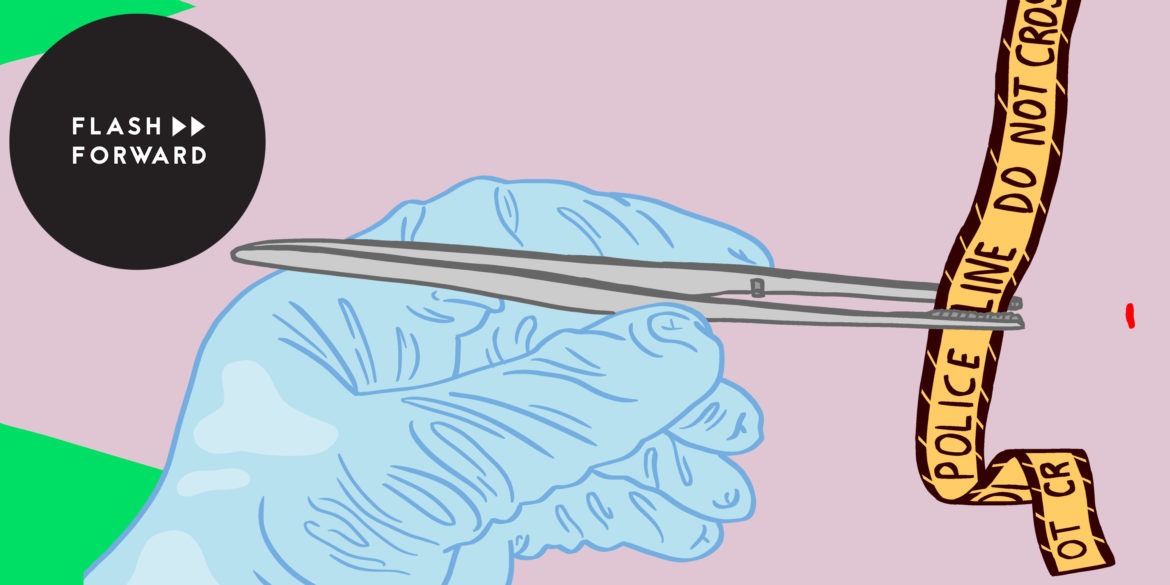
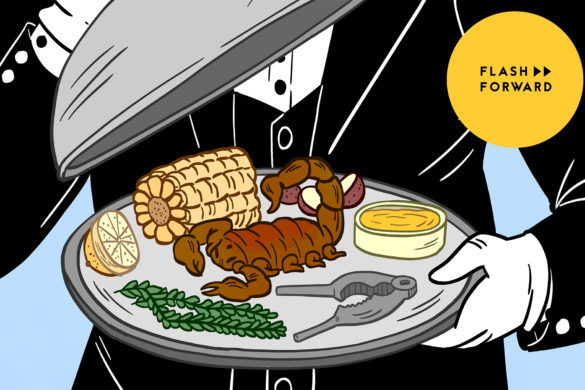
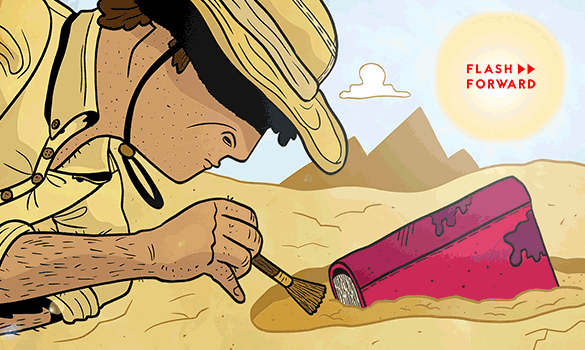
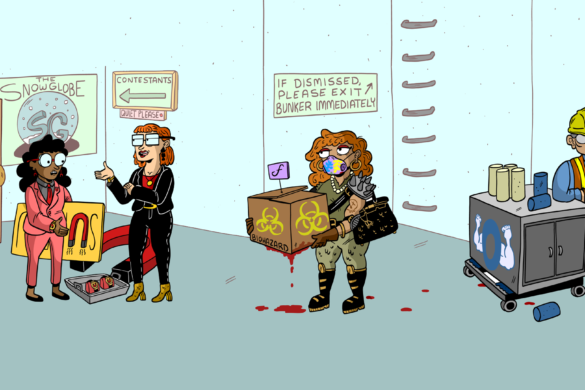
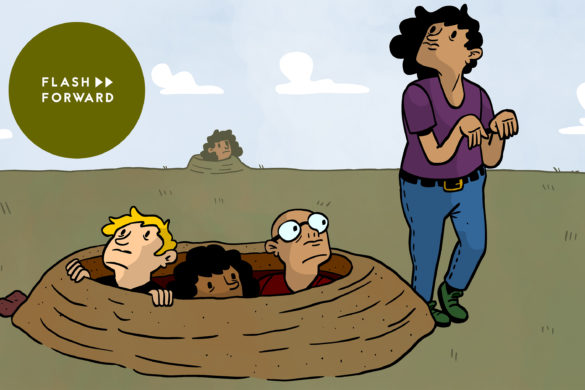
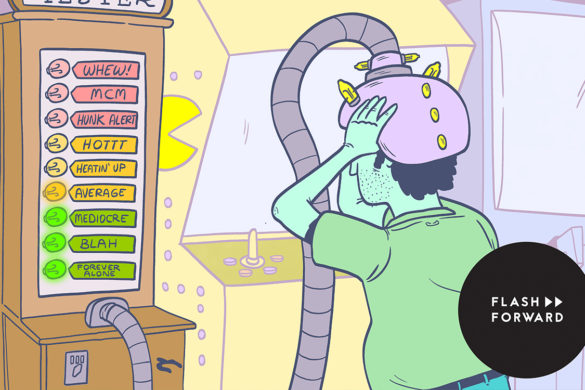

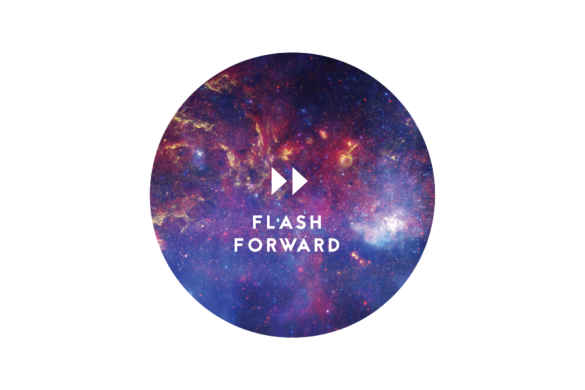
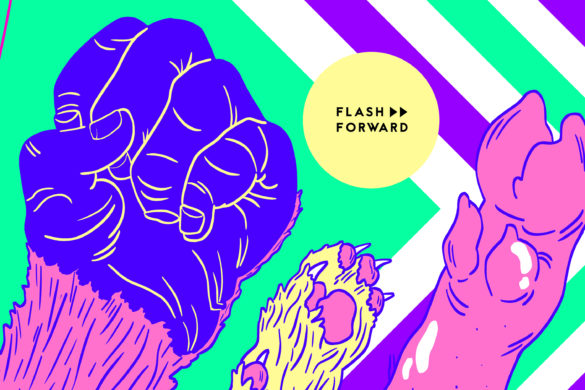
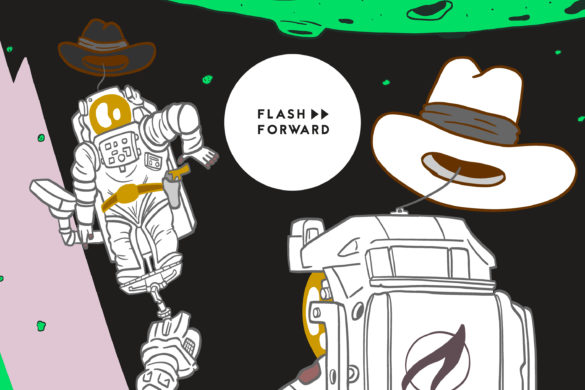

4 comments
Hey Rose sorry to bother you. I just wanted to know if there is a reason you can’t play today’s episode. Really I just wanted to make sure that you are aware of the situation lol. I keep checking back like every 15 minutes and it’s still not working lol. Anyway, loving the season and I’m so so looking forward to this episode!!! Keep it up, this is my favorite podcast ever!
It’s because it wasn’t done yet! I forgot to unschedule this post while I finished it up this morning 🙂 Should be available in about 10 minutes!
[…] CRIME: CSI++ […]
[…] I’m working on a book project on falsity and forensics, so eventually you’ll be able to read more about cases like this latter one (involving false evidence). In the meantime, I have a chapter here on fabricated evidence of another kind–planted animal blood (podcast version here). […]